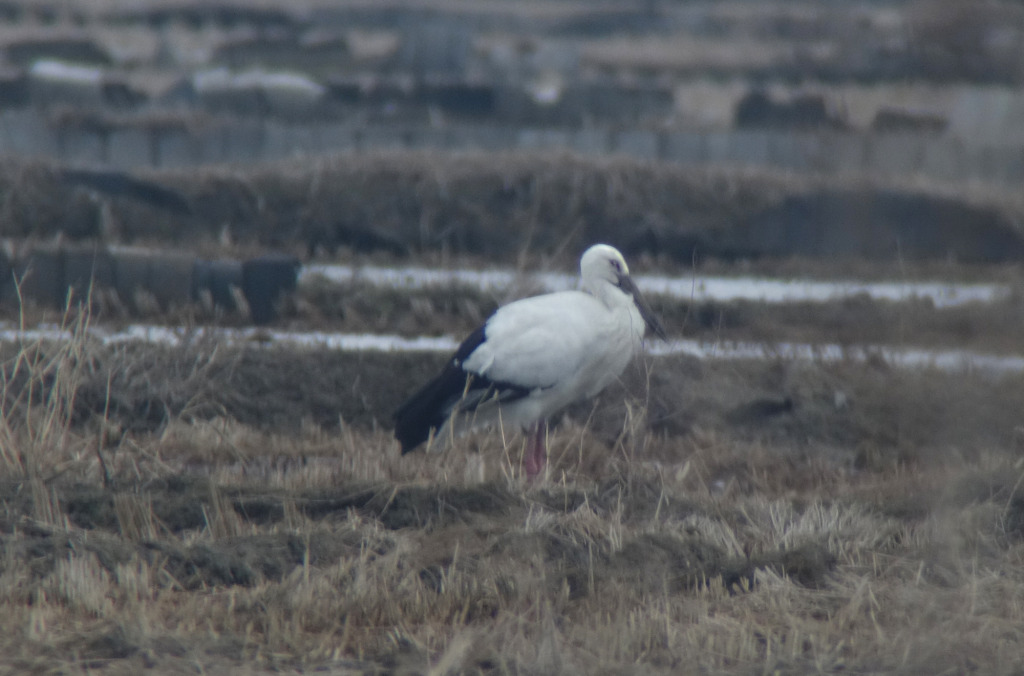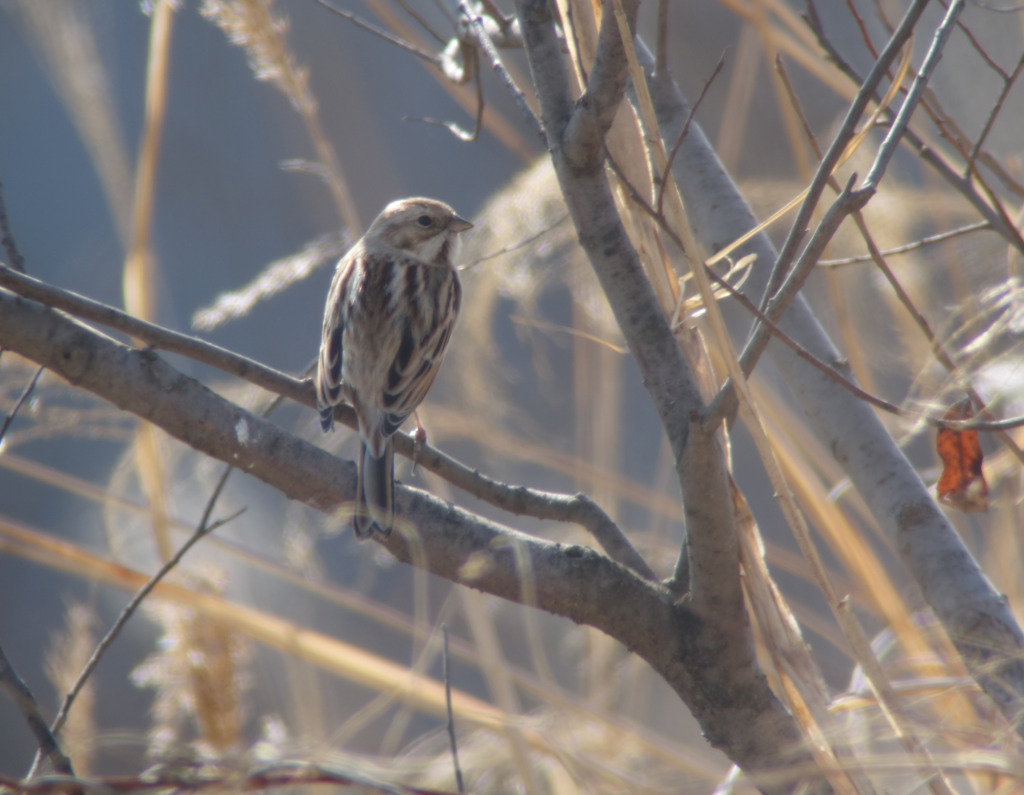Bird News from Nial Moores with Robert Orenstein (and Bernhard Seliger on the 27th)
We enjoyed a very successful (high-speed!) visit to several top sites (Nakdong Estuary and Junam on the 24th; Southeast River, Geum Estuary and Seosan on the 25th; National Arboretum and Imjingak on the 26th; and Cheorwon on the 26th and 27th), focused on seeing a short-list of winter specials not seen by RO on an otherwise successful professional bird tour of Japan. Weather was good throughout, with temperatures that ranged from a minimum -8C on the 27th up to +13C on the 25th.
Most notable species included:
- Swan Goose Anser cygnoides. A flock of sixty-six of this Globally Vulnerable species were at the Geum Estuary on the 25th.
- Lesser White-fronted Goose Anser erythropus. One adult was at the Geum on the 25th. There was too little time to check other large flocks of Greater White-fronted Goose seen at the Geum and in Cheorwon for more individuals of this Globally Vulnerable species.
 Lesser White-fronted Goose Anser erythropus (right) with Greater White-fronted Goose (left) © Nial Moores
Lesser White-fronted Goose Anser erythropus (right) with Greater White-fronted Goose (left) © Nial Moores
- Baikal Teal Anas formosa. One at Junam (NM only) and 120,000+ at the Geum River.
 Baikal Teal Anas formosa © Nial Moores
Baikal Teal Anas formosa © Nial Moores
- Scaly-sided Merganser Mergus squamatus. A pair of this Globally Endangered species was well seen at our first stop on the Southeast River.
- Oriental Stork Ciconia boyciana. A minimum of four (seen in one extended scan) and up to a maximum of six of this Globally Endangered species were at Seosan on the 25th. None were from restoration programmes.
 Oriental Stork Ciconia boyciana © Nial Moores
Oriental Stork Ciconia boyciana © Nial Moores
- Cinereous Vulture Aegypius monachus. Probably 100 in total were seen in the northwest on the 26th and 27th.
- Eastern Marsh Harrier Circus spilonotus. One female was (still) at the Nakdong Estuary on the 24th.
- Siberian Crane Grus leucogeranus. This Critically Endangered species has been recorded annually in the ROK in recent years, and thanks to special access arrangements kindly made once more by Dr. Seliger and the Hanns Seidel Foundation, we enjoyed excellent and prolonged views of the three overwintering birds in the CCZ in Cheorwon on the 27th. Although poor due to heat haze and harsh light, some of the images show a hint of buffish tones to the parts of the plumage of one of the birds, and some difference in the denseness of the tertials as noted in the field. Are such differences age-related?
 Siberian Crane Grus leucogeranus © Nial Moores
Siberian Crane Grus leucogeranus © Nial Moores
- White-naped Crane Grus vipio. In total probably ~300 were seen in Cheorwon, including several groups of this Globally Vulnerable species spiraling high in preparation for northward migration. The largest feeding flock contained c. 150 individuals, including one smaller, dark-looking crane that was seen only briefly in flight (perhaps the Demoiselle?), and one bird later heard to give an almost barking, gruff call. As noted by RO, it is possible that some of the White-napeds seen here (in rather more natural surroundings…) could have been the same individuals seen in Kyushu less than two weeks before, when northward migration was also noted.
- Red-crowned Crane Grus japonensis. Probably 40+ of this Globally Endangered species were seen in the CCZ on the 27th, including several high-spiraling birds; and two were seen outside of the CCZ.
 Red-crowned Crane Grus japonensis © Nial Moores
Red-crowned Crane Grus japonensis © Nial Moores
- Hooded Crane Grus monacha. Probably 60 of this Globally Vulnerable species were seen in Seosan on the 25th.
- Far Eastern Oystercatcher Haematopus (ostralegus) osculans. Several were seen poorly at the Geum, and six were seen well at Seosan on the 25th.
- Solitary Snipe Gallinago solitaria. One was well-watched outside of the arboretum, shortly after dawn. Continuing habitat loss there (including the construction of a new bridge) continues to limit habitat availability for this species.
- Saunders’s Gull Chroicocephalus saundersi. There were probably 20 at the Nakdong Estuary and 100 of this Globally Vulnerble species at the Geum, including several adults in breeding plumage.
- Relict Gull Ichthyaetus relictus. Single First-winters of this Globally Vulnerable species were seen at the Nakdong Estuary on the 25th and at the Geum Estuary on the 26th.
- Eurasian Eagle-owl Bubo bubo. The “regular” bird was still near Jeonkok on the 26th.
 Eurasian Eagle-owl Bubo bubo © Nial Moores
Eurasian Eagle-owl Bubo bubo © Nial Moores
- Carrion Crow Corvus corone orientalis. Much scarcer in Korea than in much of Japan. Four or five were at Imjingak on the 26th and perhaps 10+ were in the CCZ.
- Light-vented Bulbul Pycnonotus sinensis. Three were seen overflying the expressway in Sancheong County (Gyeongsangnam) on the 26th.
- Naumann’s Thrush Turdus naumanni. Several were seen, including at Junam, the Geum and in Cheorwon.
- Siberian Accentor Prunella montanella. A prolonged search for this usually widespread species ended with one watched excellently as it fed in the open in Cheorwon on the 26th, with a second bird calling close by. One was also heard at Imjingak on the 26th and another was seen briefly near the CCZ on the 27th.
 Siberian Accentor Prunella montanella © Nial Moores
Siberian Accentor Prunella montanella © Nial Moores
- Long-tailed Rosefinch Carpodacus sibiricus. One in Imjingak and two in Cheorwon were the only ones encountered.
 Long-tailed Rosefinch Carpodacus sibiricus © Nial Moores
Long-tailed Rosefinch Carpodacus sibiricus © Nial Moores
- Pallas’s Rosefinch Carpodacus roseus. Two were heard outside of the National Arboretum on the 26th (but not searched for due to time constraints).
- Pallas’s Reed Bunting Emberiza pallasi. Six were seen at Seosan on the 25th and c.10 were seen well on the Imjin River on the 26th, including two “hooded” males already 70%+ in breeding plumage.
 Pallas’s Reed Bunting Emberiza pallasi © Nial Moores
Pallas’s Reed Bunting Emberiza pallasi © Nial Moores

